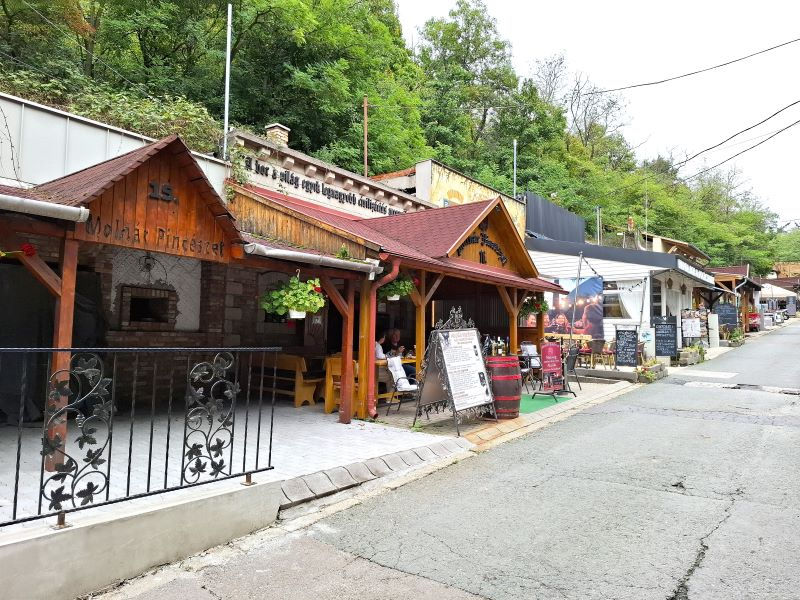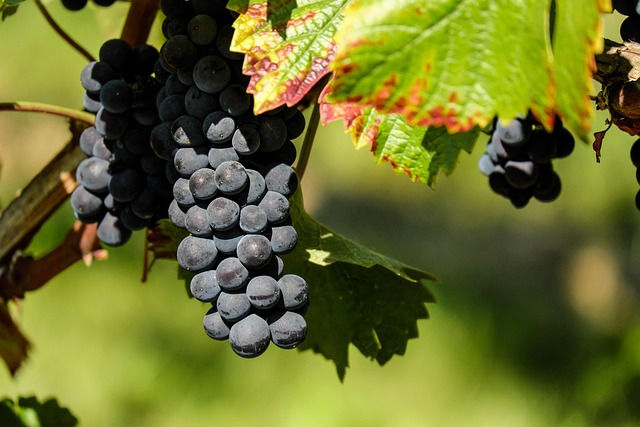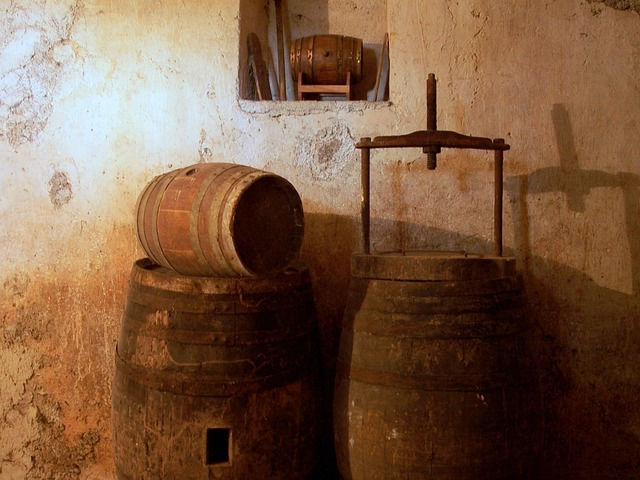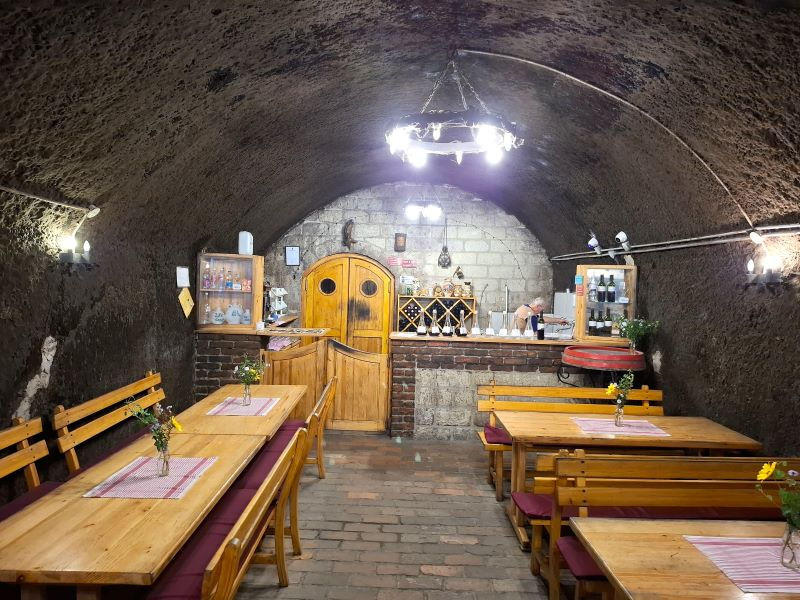Tasting Wine in Eger's Valley of Beautiful Woman
- Vedran Obućina
- Sep 28
- 5 min read
A tourist train carries every hour thirsty guests from the centre of Eger to the Valley of the Beautiful Woman (Szépasszony-völgy). This is the number one location for wine tasting in Eger. In a very special way, the climate of the Eger wine region favours both white and blue grapes. Thanks to the valuable endowment, many small and large wineries operate in the area, many of them are open as tasting cellars dug into the tuff in this valley. We had to visit them!

The beginnings of vine-growing in the district of Eger fade into the distant past. Archaeological findings on the side of Nagy-Eged Hill preserve the memory: a paleo-vine variety dating from 30 million years ago known as Vitis Hungaricus. Naturally, this does not resemble present-day vine varieties too much. Nevertheless, it suggests a plant with a great past.

The vineyards we see today were planted by the Bishopric of Eger, founded by Stephen I, the first king of Hungary. At times when wine was a regular drink like water today, this was an essential production, made better by Cistercian monks who came to Eger together with Wallonian settlers who brought new ways of preserving wine in barrels. By the 16th century, Eger was a dominant winemaking region, where the bishopric and surrounding villages were masters of viticulture.

This all changed with the Ottoman conquest, not necessarily for the worse. Running from the Turks, Serbian winemakers brought red varieties for which Eger is now so well known. After the Ottoman conquest of Eger in 1596, viticulture in the region entered a turbulent yet formative period. Although many vineyards were devastated during the wars, winemaking endured, sustained largely by local Hungarians and later revitalized by settlers from other winegrowing regions of the Habsburg Empire. In the 18th century, Eger’s wines gained increasing recognition, especially the robust red blend known as Egri Bikavér (“Bull’s Blood”), which became a symbol of Hungarian resilience and identity.

Throughout the 19th century, modernization of viticulture techniques and the rise of cooperatives strengthened production, though the phylloxera epidemic of the late 1800s devastated the vineyards, prompting replanting with more resilient grape varieties. Under socialism in the 20th century, winemaking in Eger was collectivized, often prioritizing quantity over quality, but after the regime change in 1989, independent winemakers revived traditional methods and emphasized terroir-driven production. Today, the Eger wine region is internationally respected, producing both elegant reds and distinctive whites, while Egri Bikavér remains its most famous emblem, celebrated as a historic blend that connects the region’s turbulent past with its dynamic present.

Cultivar diversity in the Eger Wine District is not a recent development, it has been characteristic of the area for centuries. The proliferation of red wine cultivars began with the Kadarka grape, introduced to Hungary by Serbs fleeing the Ottoman Empire's push into their lands. Thereafter more and more red wine varieties were utilised in the wine district. Today, the cultivar diversity aids the success of the Eger's blended wines. Here, one can find Blaufränkisch, Blauer Portugieser, Cabernet Sauvignon, Cabernet Franc, Merlot, Blauburger, Pinot Noir, Kadarka, Turán, Menoire, Zweigelt, Leányka, Királeányka, Welsrhiesling, Hárslevelű, Chardonnay, Furmint, Muscat Ottonel, Cserszegi Fűszeres, Sauvignon Blanc, and Viognier.

The Valley of the Beautiful Woman (Szépasszony-völgy) in Eger is one of Hungary’s most famous wine destinations, located just a few minutes from the city’s historic centre. This picturesque valley, surrounded by gentle hills and vineyards, is home to hundreds of wine cellars where visitors can sample top-quality red and white wines, including the renowned Egri Bikavér. Beyond wine, the valley exudes authentic Hungarian charm – wooden cellars, stone passageways, and rustic stalls offer a unique experience of local gastronomy, tradition, and winemaking culture. During festivals and wine events, the valley becomes a lively hub of music, socialising, and Hungarian hospitality, making it a must-visit destination for wine lovers and cultural enthusiasts alike.

We visited two such wineries, where we enjoyed premium red wines. Nestled in the renowned Szépasszony-völgy (Valley of the Beautiful Woman), Farsang Winery is a family-run estate with deep roots in the region’s winemaking tradition. Led by Tibor Farsang, a trained viticulturist and oenologist, the winery combines modern techniques with a heritage that spans generations. The family’s commitment to quality is evident in their wines, which are crafted from estate-grown grapes and matured in cellars that benefit from the valley’s unique microclimate. Visitors to the winery can experience a warm Hungarian welcome, taste a variety of local wines, and immerse themselves in the rich history of Eger’s wine culture.

At Farsang Winery, visitors are immediately embraced by a warm, homely atmosphere that feels more like stepping into a welcoming family home than a commercial wine estate. The rustic interiors, with exposed wooden beams, traditional stone cellars, and carefully curated local décor, create an intimate and cozy environment. Tibor Farsang and his family personally greet guests, sharing stories of their winemaking heritage and inviting visitors to join in the rhythm of daily vineyard life. Tasting sessions are relaxed and friendly, with a sense of genuine hospitality that makes everyone feel at ease, as if they are part of the Farsang family, celebrating the region’s wines together.

Bolyki Winery is a unique gem in the Eger wine region, set within a dramatic 30-metre-high stone quarry. Founded in 1998 by János Bolyki, a first-generation winemaker, the estate spans 27 hectares of vineyards, many of which he personally planted. The winery's cellars are carved directly into the rock, offering a cool and atmospheric setting for wine tastings and events. Bolyki's portfolio includes notable wines such as Egri Bikavér (Bull’s Blood), Cabernet Franc, and Egri Csillag, all reflecting the region's volcanic terroir and the winemaker's dedication to quality. Visitors can enjoy guided tours, wine tastings, and a variety of events, making it a must-visit destination for wine enthusiasts in Hungary.

Bolyki Winery's Öreghegy Egri Bikavér Grand Superior 2020 is a distinguished expression of Hungary's iconic red blend, known as "Bull’s Blood." Crafted from four premium grape varieties—Kékfrankos (Blaufränkisch), Cabernet Franc, Merlot, and Kadarka—sourced from the Öreghegy vineyard in Verpelét, this wine embodies the pinnacle of Bolyki's commitment to quality. The wine presents a deep ruby hue, accompanied by a complex nose of ripe black fruits such as plum and sour cherry, complemented by hints of cinnamon and dark chocolate. On the palate, it offers a concentrated and balanced profile, with fine-grained tannins and a lingering finish. Aged in oak barrels, it showcases the elegance and depth characteristic of a Grand Superior Bikavér. With an alcohol content of 14% and total acidity at 5.1 g/L, it is a wine of notable structure and ageing potential. The Öreghegy Egri Bikavér Grand Superior 2020 is a testament to Bolyki Winery's dedication to producing wines that reflect the rich terroir of the Eger region, offering a refined and memorable tasting experience. The "Bolyki Circus" label on Bolyki Winery's Egri Bikavér wines is a playful nod to the winery's creative and whimsical approach to wine branding. This label features a stylised circus motif, aligning with the winery's tradition of imaginative and memorable wine names and labels, such as "Indián nyár" (Indian Summer) and "Hazug mókus" (Insincere Squirrel).

In the Eger district so-called wine caves have been dug out of the area's soft rock since the very beginnings of viticulture. With the transformation of wine culture in modern times, the communal consumption of wine has increasingly demanded a place for itself alongside the traditional spaces dedicated to its aging and storing. In reaction to this, vintners and architects have joined forces to create a series of attractive and highly functional constructions, which faithfully reflect the variegation of regional wines.
Wine tourism is one of the most dynamic and developing sectors of smaller, boutique tourism. There is many reasons for this, but the most important is without doubt the increasing need for quality wine. Local winemaking in Hungary relies largely on the smaller cellars, has the quality of the craftsman about it and has become fashionable to have an extensive knowledge of wine. All this is very true for Eger!








Comments